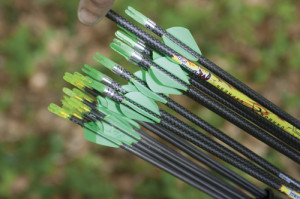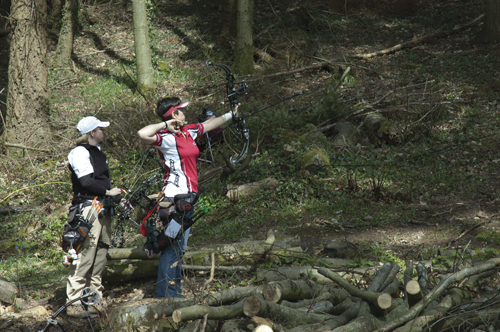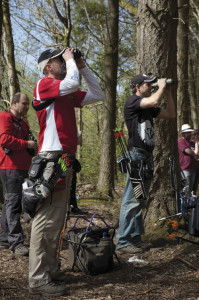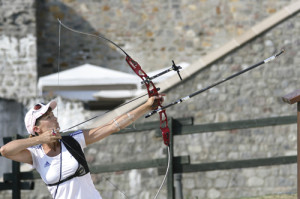Field archery is the ultimate challenge, whatever your bow style, and many of the world’s elite concur that their field exploits represent their finest achievements in archery. The accuracy that a quality target archer brings to this new experience is an obvious asset, but a greater set of skills need to be honed if one is to master this testing, yet satisfying, aspect of shooting.
My return to the sport as a Masters competitor, with time as an ally in retirement, yielded National Championships and then world gold in both FITA and IFAA disciplines. But I must stress that this was not done without considerable focus, practice, and knowledge of my recurve equipment. The transition to ‘the dark side’ has required a reassessment of those field skills, and a re-education of what exactly my compound is capable of under field course conditions. It has been a fun challenge so far.
So what exactly does a target archer venturing out into the woods need to learn, in order to reach a reasonable level of competence around a field course?
Firstly, preparatory needs, before starting on the opening target. Secondly, what one must know when the action begins, and thirdly, the finer skills to execute that knowledge, which in reality will take time, focus, experience, and practice hours.
So initially, what is imperative to address as a starting point? As in any archery discipline, you must have your equipment in excellent shape and a set of either metric or imperial sight marks for FITA or IFAA rounds. The sight tape must be tried and true, because the gold size on all targets is relatively small, and with only three (FITA) or four (IFAA) arrows, the first shot is critical. Most elite shooters use a sight tape exclusively, while others use a double check system and use a sight number (for example, 2.65 for 25 metres) as well. Personally, I set my sight off a number, and then check the sight tape as a guarantee, and I have never shot a wrong distance as a result.
Compounders are blessed with third axis sighting, which minimises windage concerns. When I competed recurve, I kept a windage reference to prevent major left or right arrows at varying distances.
Now, because, unlike at a target event, one cannot reach into one’s kit bag if a replacement is needed, it is sensible to carry with you a spare tab, release aid, rest, nocks, string and an arm guard, should an equipment breakdown occur on the course.
Several other items also become critical. Durable, comfortable footwear, hat, cap or visor, sun screen if one is fair of complexion, insect repellent if the terrain requires, a supply of water, especially if the course has no drink stations, and wet weather gear should the day be inclement. You also need a pen to score with, of course. In addition, quality binoculars are a necessity to plot your arrows, and make any adjustments after that first critical shot has been taken.
So let’s assume you have arrived with all of the above in readiness, remembering that the use of range finders and angleometers is illegal in FITA events. It is advisable to allow ample travel time if journeying to a tournament; the last impediment one needs is to approach target one, having arrived late, and with an accelerated heart rate, only to find you’ve left some major equipment item in the car. Shooting composure is of supreme significance.
So now you are all kitted out, and have arrived on time, the usual procedure is to sign in, and check your target allocation. Now you can proceed to the practice area, where numerous targets at the distances you will encounter are laid out. This is an ideal opportunity to re-check that sight tape, as sometimes weather conditions, and even the varied elevation in different parts of the country, can marginally affect your markings. It is also a chance to shoot a few relaxed arrows, and get body and mind focused for the task ahead.
Finally, you will assemble with your fellow protagonists, and be sent off to the various allocated targets to commence your round. Now comes the moment of truth; and this is when those practised skills and field know-how come so vitally into play. You will shoot each target in pairs, two up, two back, and then alternate on the subsequent target. The peg will inform you of the distance to the target (there are five metre increments from ten to sixty for the FITA round) and as mentioned earlier, your first arrow needs to be well thought out, and well shot. The correct order of procedure is to check the peg, set your sight, realising that any shot up or down more than approximately 30 degrees will require a cut on your sight mark. Now, clearly this will vary depending on your personal set-up, bow, poundage, and arrow choice, and the ability to ascertain cut is one of those critical skills that separates an elite field archer from an amateur.
IFAA shooters can check yardage to the target with a range finder, and using a cosine chart with an angleometer reading,
obtain a definitive sight mark. This is not available to the FITA competitor, and is a skill acquired through practice and tournament experience, and a vital one.
Having settled on a sight setting, with cut if need be, check the target face for any hole pattern produced by previous groups. Initially, this will not be evident, but as the day progresses, it becomes a reliable guide as to whether previous contenders have shot the target high, low, left or right. If a really obvious pattern is in evidence, then once again, this may influence your decision as to where you set your sight in order to compensate for the trend.
Now comes that first arrow. It is so important because if shot well it gives you a reliable reference for your next arrows. The next knowledge necessity is how much to alter the sight setting by if the first arrow is well shot, but not in the centre. Again, this is a practice and tournament experience item of know-how, and it helps if you know your equipment back to front.
As the round progresses there will be targets encountered where multiple faces are utilised, and it is imperative to be certain you shoot the correct face. If a newcomer to field, experienced members of your group will be only too happy to help you out, so don’t be afraid to ask.
Should, perchance, the second day be shot on the same 24 targets, which is often the case in many events, a little note-taking as to cut, and left-right terrain errors encountered on day one, can ensure your day two total is superior.
Remember throughout to stay hydrated. This helps nerves and focus. Ensure you use your factor 30+ if need be, and absorb any knowledge in evidence, should you be part of a group that boasts superior and experienced field shooters. Watch, listen and learn.

Some courses allow you to use dual sets of arrows, though most competitors prefer to use a single set to prevent tuning issues
If you are a newcomer, be aware that uphill shots shorten your draw length, and downhill shots do the reverse. Be very aware of your stance and form so the passage through the clicker remains fluent. I have found that drawing on the target directly (whether uphill or down), rather than anchoring in a horizontal position, and then moving the bow up or down, provided a much better option for correct posture, and ease through the clicker.
Another important aspect of field competition is the need for a reasonable level of fitness in order to negotiate probable irregular terrain for two days of shooting, without feeling overtaxed. I mentioned in a previous article that my own training and exercise regime certainly gave me an advantage in Masters field tournaments, where many of my adversaries did struggle physically with the demands of many hours out on a field course.
While our sport does not make the demands on the body that many others do, a state of physical fitness and wellbeing is most certainly is an advantage when peak field performance is required. Significantly, in the past couple of years the world’s best field archers, Dave Cousins, Liam Grimwood, and Chris White, have prioritised their fitness levels to great effect.
The reality is that it is difficult to envisage any sporting endeavour, even those whose physical demands may seem somewhat insignificant, where having superior fitness and strength levels is not a measurable advantage. You will clearly retain your best form on those last few targets if your energy levels are undiminished.
Finally, a couple of interesting allowances FITA archers are afforded above IFAA competitors. It is legal to use dual sets of arrows, larger diameter shafts for better line cutting at close ranges, and the usual narrow diameter arrows, for example X10s, A/C/Es, Nanos, for the longer yardages. Most shooters don’t advocate this practice, as it can cause tuning and windage problems, but with the x-ring in FITA now worth an additional point, it is at least an option, especially for compounders.
It is also legal, within reason, to ‘farm’ your stance position to obtain more positive footing. However, while some top shooters are noted excavators, in general the shooting positions are both safe and competitively reasonable on major courses.
So there we have it. A basic guide to your first field outing. Be assured that the skills needed to become the best you can be take time, field course familiarity gained through structured practice, and tournament experience. Field archery can be challenging, but no better or more rewarding archery journey can be undertaken.





Thanks for every other great article. The place else may just
anyone get that kind of information in such a perfect method of writing?
I’ve a presentation subsequent week, and I’m on the search for such information.